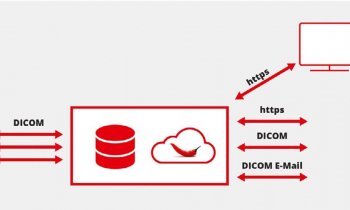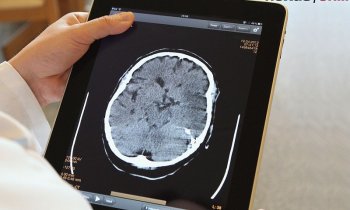The EC and teleradiology
The recently published European Commission Communication on Telemedicine for the benefit of patients, healthcare systems and society has focused in particular on teleradiology, i.e. telemedicine services involving the electronic transmission of radiographic images from one geographical location to another for interpretation and consultation, writes Michael Palmer, Project Officer at the eHealth unit, European Commission Directorate for Information Society and Media

Teleradiology was chosen as a key example of telemedicine for three reasons:
1. Teleradiology currently seems to be the telemedicine service in the most advanced stage of deployment. It has developed alongside the shift in medical imaging from film-based to digital-based technologies, even outside the ‘tele’ context. Well structured professional organisations and early establishment of standards have supported this development. There are many examples of successful, routine use of teleradiology in European healthcare institutions (see database on www.good-ehealth.org for over 100 relevant case studies).
2. Teleradiology, if implemented well, may provide clear benefits to both patients and healthcare systems by improving efficiency, quality and timeliness of healthcare service provision. It may, for instance, help healthcare facilities to cope with peak workloads, ensure round-the-clock services, reduce waiting lists for specific examinations and also cut costs.
3. Teleradiology services can be and are being offered in a national or cross-border mode involving other EU countries or third countries. These situations are of prime interest to the Communication since, conversely to strictly domestic telemedicine service provision, cross border healthcare provision falls under the remit of the Commission competences.
The aim of the Commission Communication on telemedicine is to support Member States in achieving large-scale and beneficial deployment of telemedicine services, by focusing on three strategic sets of actions:
Building confidence in and acceptance of telemedicine services
The Communication stipulates that the most important challenge for teleradiology is to ensure that it develops in a manner that benefits patient care and ensures overall patient safety, and does not in any way reduce the quality of radiology services provided to the citizen. There is still a need to build a systematic corpus of evidence of European studies measuring effectiveness and cost effectiveness of specific services in a coherent and reproducible way. Aspects related to data privacy and overall patient safety also need to be further documented.
Bringing legal clarity
The lack of legal clarity – in particular with regard to licensing, accreditation and registration of services and professionals, liability, reimbursement, jurisdiction – is a major challenge for telemedicine and, in particular, for teleradiology. Cross border provision of telemedicine services also requires legal clarification regarding privacy. Only a few Member States have clear legal frameworks enabling teleradiology. In some Member States, for a medical act to be legally recognised as such, the physical presence of the patient and the health professional in the same place is required; this is a clear obstacle to the use of teleradiology. Moreover, there are often limitations in law or administrative practice on reimbursement of teleradiology services.
Respecting the principle of ‘subsidiarity’, these issues are primarily of Member State responsibility, and thus require action at their level. However, given the complexity of these issues and their inter-relationship with aspects of Community law, Member States can be supported by action at Community level, such as sharing of good practices in order to improve legal and administrative frameworks. The European Commission will analyse how far the existing legal framework covers telemedicine (and teleradiology in particular), such as the e-Commerce Directive, which defines rules for the provision of Information Society Services both within and between Member States.
Solving technical issues and facilitating market development
Issues linked to infrastructure, like access to broadband and the ability for the provider to enable full connectivity across the European territory from urban, highly-populated areas to remote, rural, scarcely-populated areas, still represent a major challenge. The security of the network, the reliability and accuracy of teleradiology activities still cannot be guaranteed. Many issues relating to secure image data transmission remain still to be solved. Although industry is working in a coordinated manner in this area, interoperability between systems is not yet fully achieved. The Commission urges the industry to work together to address jointly these obstacles.
There is still much to be done to support a beneficial development of teleradiology in the EU, but with the cooperation of all relevant stakeholders, it is hoped that its benefits can be shared throughout the Union.
http://ec.europa.eu/information_
society/ehealth/policy
01.03.2009











